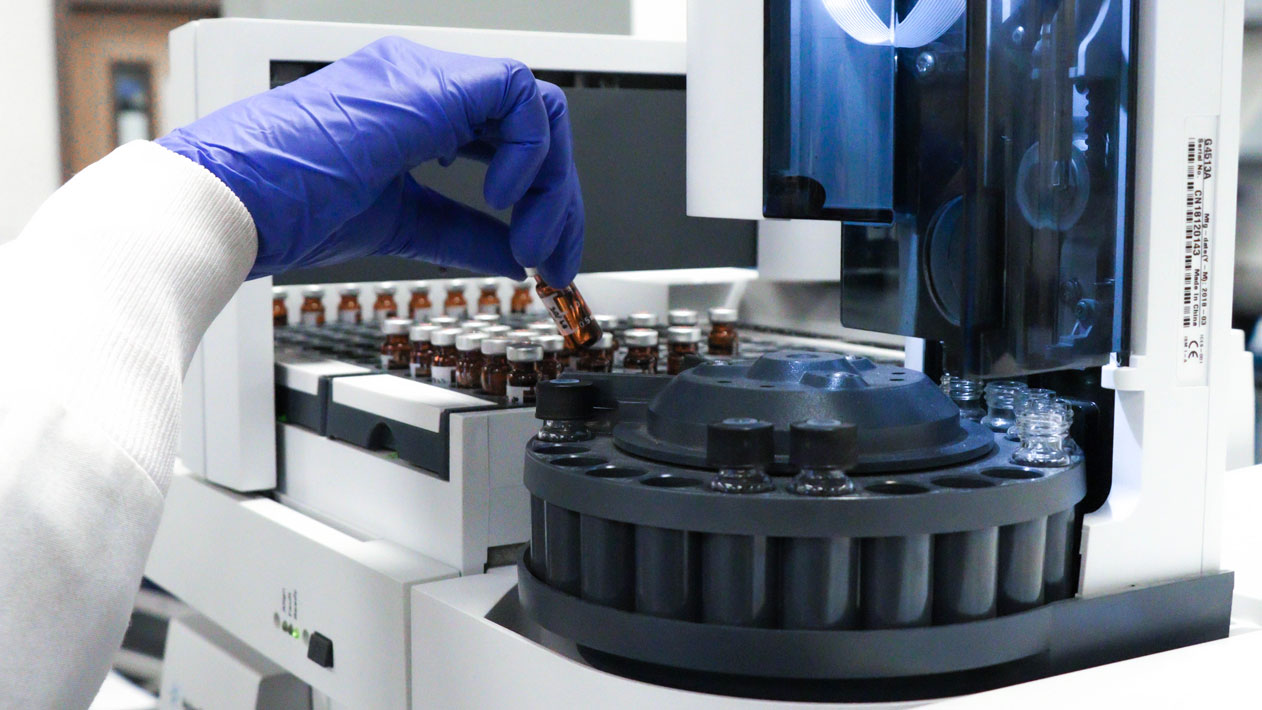Origin: a Latin derivative
meaning "Gift of the Earth."
- Shop
-
Our Story
- View Our Story Home
- Who We Are. . . .
- What We Do. . . .
- Why We Do It. . . .
-
dōTERRA[doh-teh-ruh]
Quality Testing: GC/MS

Article at a Glance
For essential oils, purity starts at the source; the planting, harvesting, and extraction processes that take place before an essential oil ever reaches a lab. Yet, there is still the potential for adulteration and contamination to occur before an essential oil reaches the consumer. To ensure that not only are your oils pure, but of the highest quality available, testing, such as GC/MS, is critical.What Is GC/MS?
The standard for essential oil quality testing, GC/MS stands for Gas Chromatography/Mass Spectrometry. These two separate analytical tests work together to paint an important picture regarding the chemistry of your essential oils.-
Gas Chromatography: The goal of gas chromatography is to separate, identify, and measure the amount of the individual chemical constituents contained within an essential oil sample. This test is conducted by a machine (gas chromatograph), beginning by heating the oil and pushing it through a column within a passive carrier gas such as helium, hydrogen, or nitrogen. The individual compounds of the oil move through the column at different rates because of their molecular weight and size. A detector at the end of the column measures when each constituent passes through. This creates a report, known as a chromatogram, that presents a graph separating detector response (on the y-axis) and retention time (on the x-axis). Scientists compare the resulting peaks on the chromatogram with accepted standards to verify that the correct chemical constituents are present and in the right amounts.
- Mass Spectrometry: Once an oil is broken down into its constituents in the GC, the pieces are run through a mass spectrometer, a machine that analyzes the mass-to-charge ratio of ions. A mass spectrometer is composed of three separate components: an ion source, a mass detector, and an analyzer. The individual constituents are exposed to a stream of electrons that break apart and provide a charge to the neutral ions. The ionized molecules then travel through a series of magnetic fields, responding in distinct ways because of their mass and charge. The mass spectrum report details the quantity, mass, and charge of each constituent on a plot. Scientists analyze the peaks on the mass spectrum and compare them to accepted standards for additional verification of purity.
Why GC/MS Matters for You
While GC/MS may sound technical, at its core, this combination of tests is all about making sure an essential oil contains what it is supposed to; that delicate balance of terpene compounds that makes each essential oil unique. This is important because, if an oil doesn’t contain the right constituents and in the right amounts, it might not support your body in the manner that research suggests and that you’re hoping for. When it comes to purity, you don’t have to simply take doTERRA’s word for it. Not only are doTERRA’s oils tested through an independent, third party lab, but doTERRA also makes its GC/MS results (known as chromatograms) available for batches of its single essential oils. You can find these results using the lot number on your oil bottle at sourcetoyou.com. Quality testing is key to pure essential oils, ensuring that these oils are safe for you and your family.-
Copied to clipboard
- Download


